The fifth hole is the only par 5 on the course and is just under 500 yards. The bunker on the left is around 240 yards from the tee, with the collection of bushes on the right side a bit further up. Elevated tee and a pretty gentle dogleg right.

The second shot needs to carry a drainage ditch on the left side of the fairway or a small pond on the right. If you hit a 250 yard tee shot, it's only around 160 yards to carry the hazards. However, if you've missed the fairway, you may be forced to lay up.
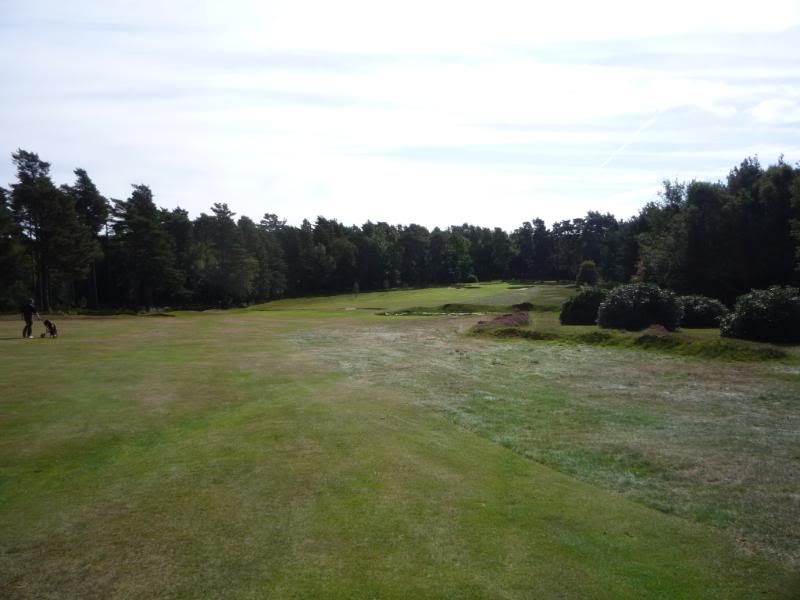
In this photo, you can see the ditch on the left side of the fairway. The edge of the pond is just visible on the right. Interestingly enough, there is a small area of ground where a ball could roll between both of these hazards. The ditch is about 100 yards from the green.
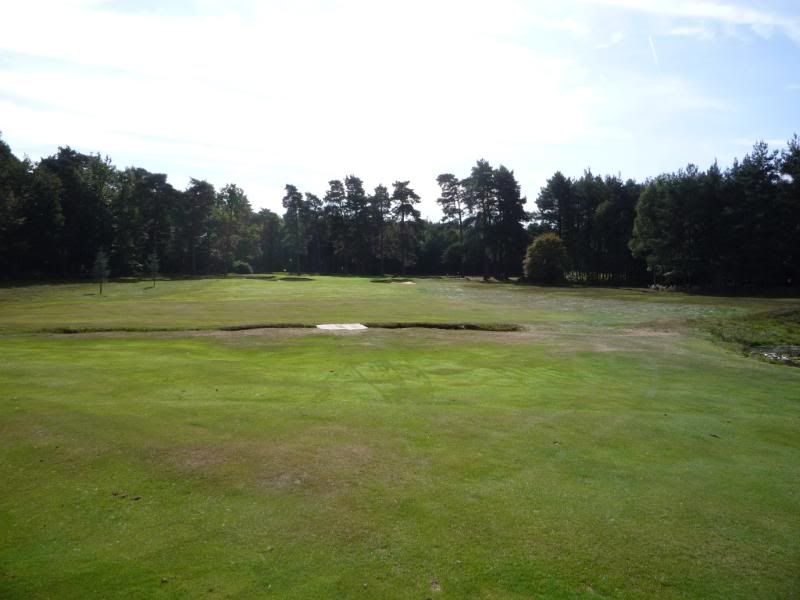
This green is well-protected by bunkers. Another one where you would need to be approaching from just the right angle to be able to run an approach on.
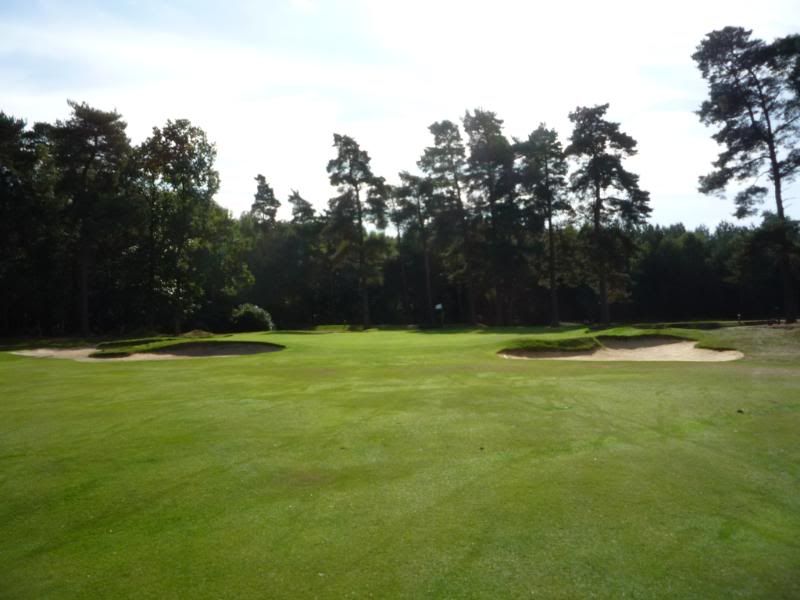
A look at the green & back up the fairway from the 6th tee.

Finally, here's a little different perspective of the hole. This was taken from the 16th. The 5th tee is on the right out of view.
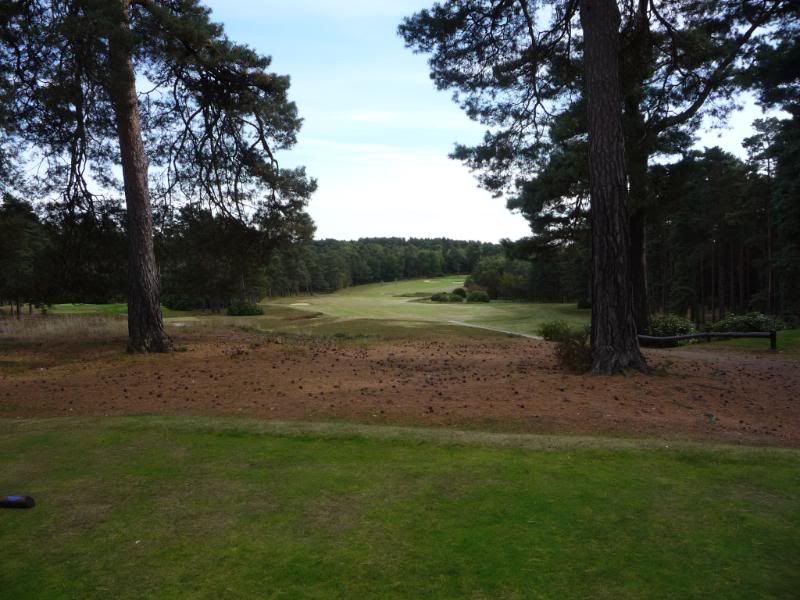
The 6th is a 424 yard par 4. There is more room off the tee than the corridor of trees shown in this photo. The heather on the left side of the fairway tapers out to provide more landing area, but it does continue all the way up the left side. Still, the heather is better than the OB to its left.
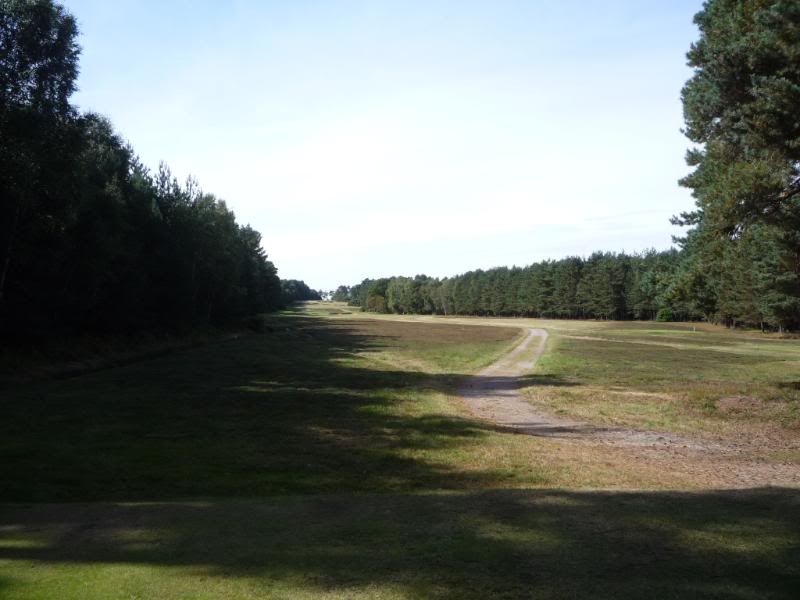
Note how wide the fairway actually is. This is a really cool looking hole as the 6th and 7th both occupy the same corridor. You can see bunkers for the 7th way up at the top of the hill.

A look back towards the tee.
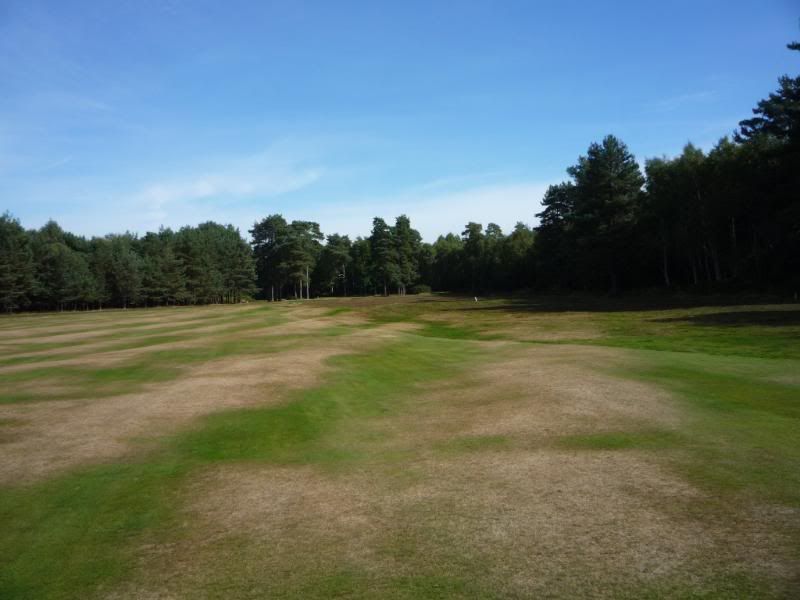
Seems the left side is OB because of the horse training area. According to the Swinley Special book, this sign went up because some members' dogs were so good at retrieving balls on the other side of the boundary.
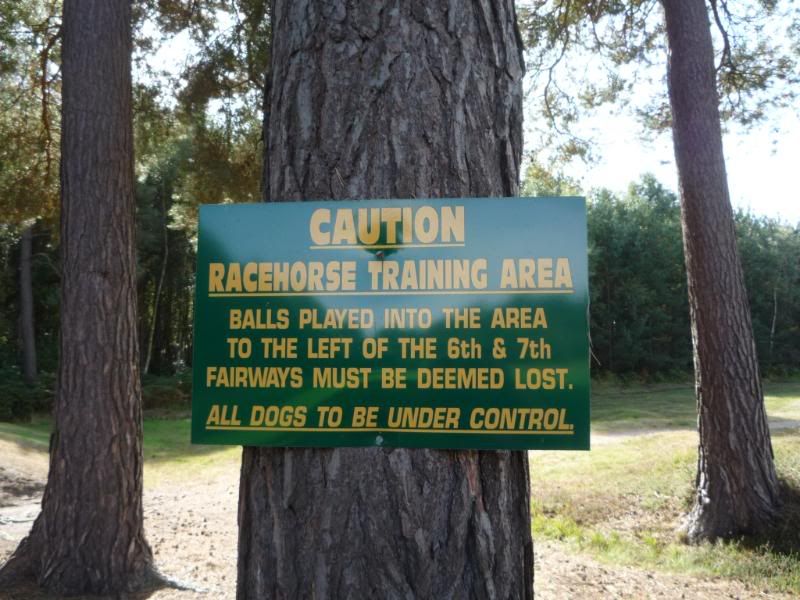
This photo of the boundary area gives some sense of what the land must have looked like to Colt.

Another well-bunkered green. There are probably ten yards between the back of the bunker on the right and the front of the green. The 7th fairway rises behind the green.
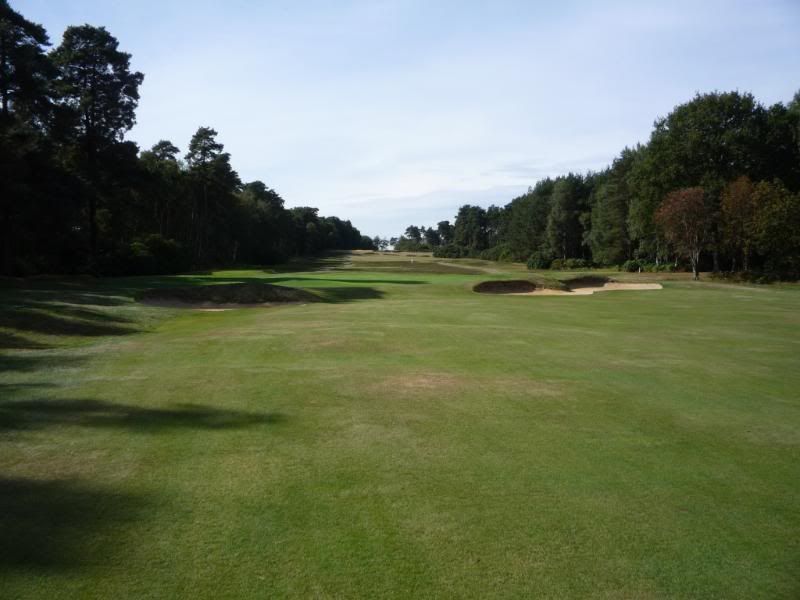
The 7th is an uphill 400yd par 4. The back tee is to the right of the 6th green. The fairway is interrupted around 260 yds from the tee.
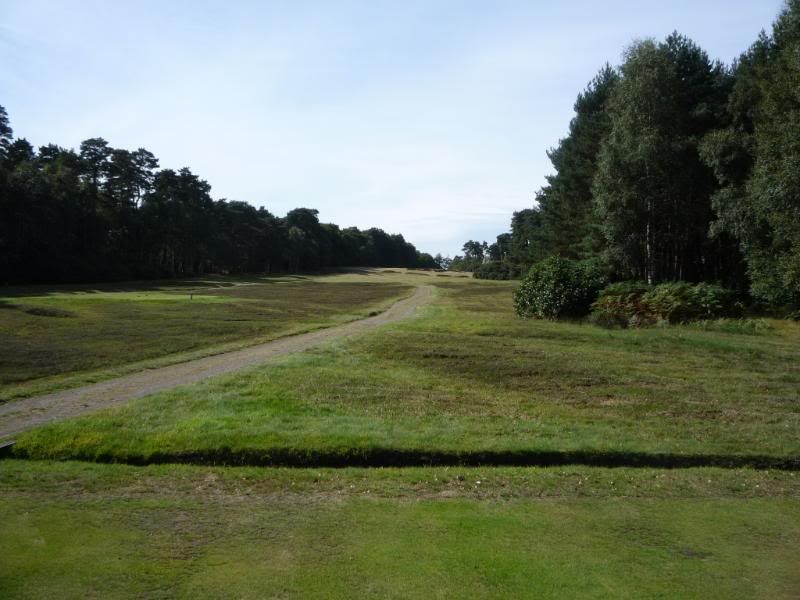
These small heathery mounds make for an effective hazard. There are similar mounds to these on the 9th & 12th. These were part of the Fernhill fuel allotment boundaries that preceded construction of the course. As I understand it, the mounds delineated areas that poor people were able to harvest trees for fuel. I'm glad Colt left some of them in place.


A rather imposing bunker guarding the uphill approach, though the green is some 50 yards beyond it. A rather nice bit of visual deception that also hides the greenside bunkers from view. The second photo shows the bunker from the side, taken on the 13th hole.
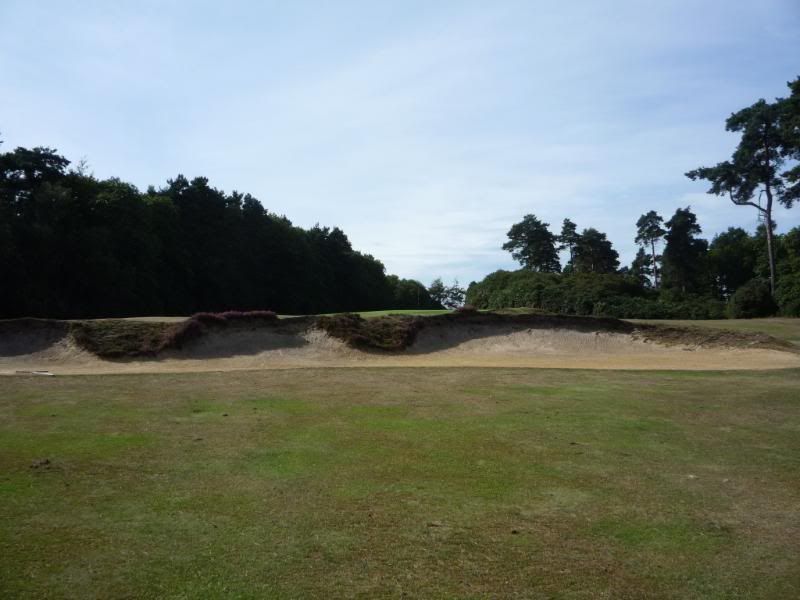
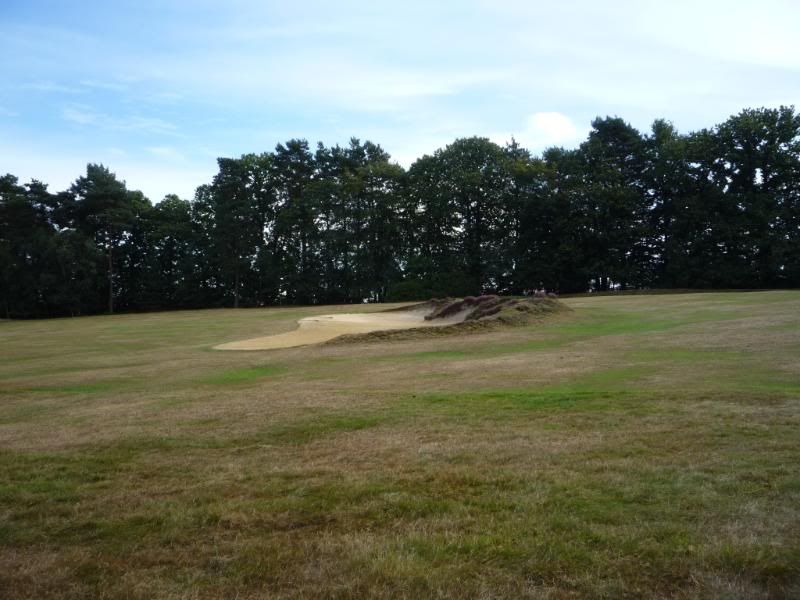
The green is built nicely into the top of the hill. This photo is from the right side.
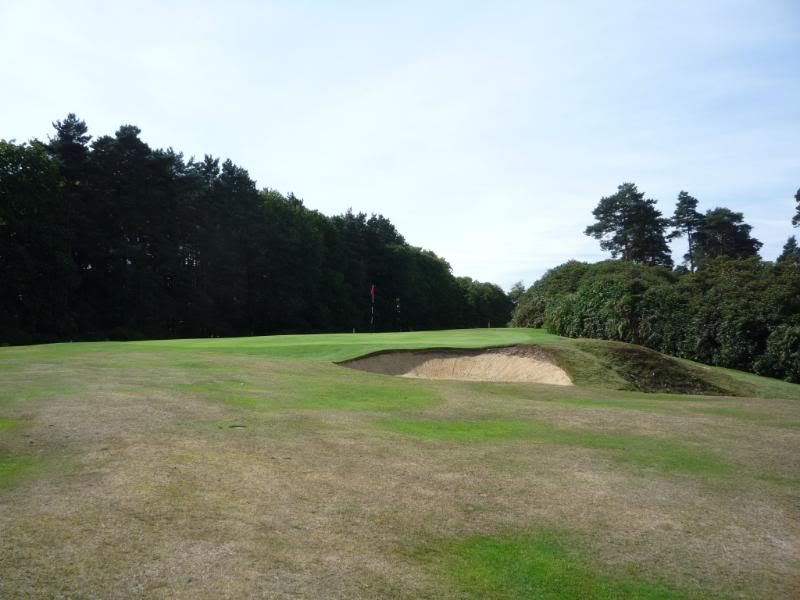
Quite a bit of internal contour and overall tilt to this green. The view all the way back to the 6th tee.
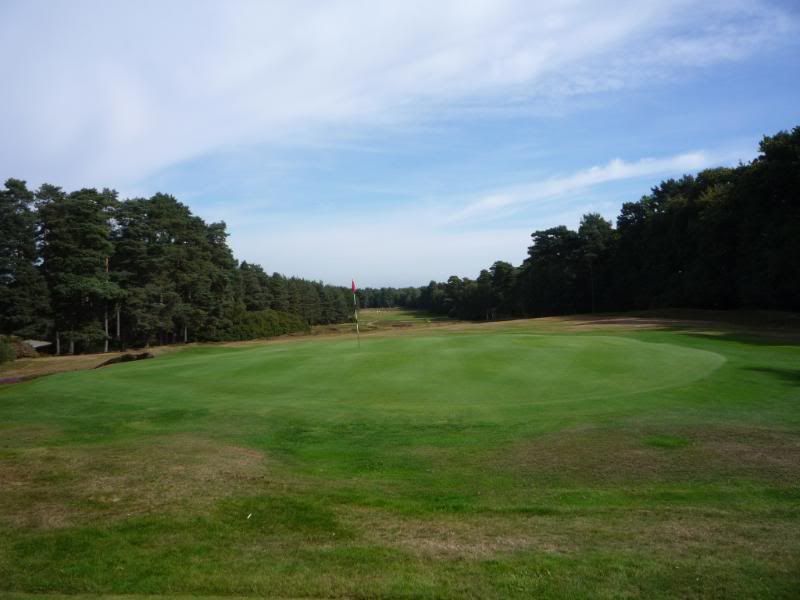
On to the 8th. This 146 yard par 3 had a very memorable green site. Bunkerless, but a severe falloff to the right side and heathery mounds on the left. The mounds would be far preferable to the OB beyond.
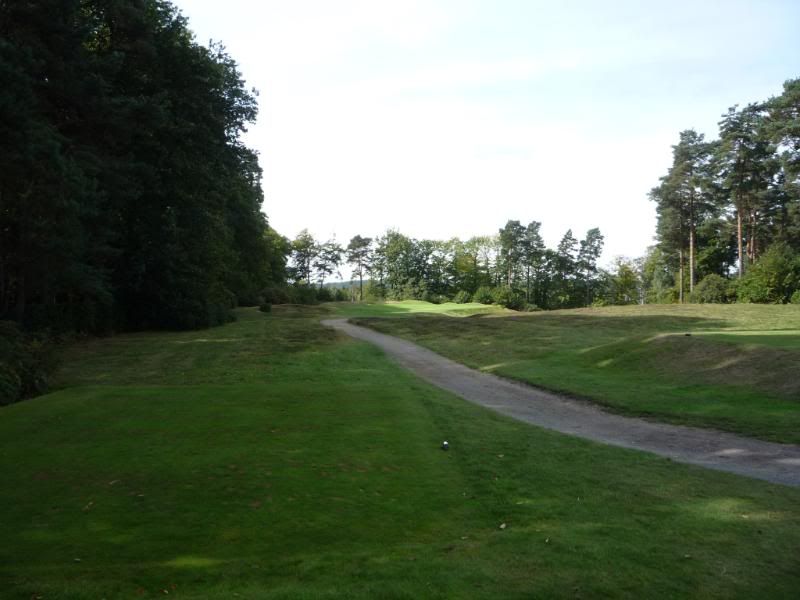
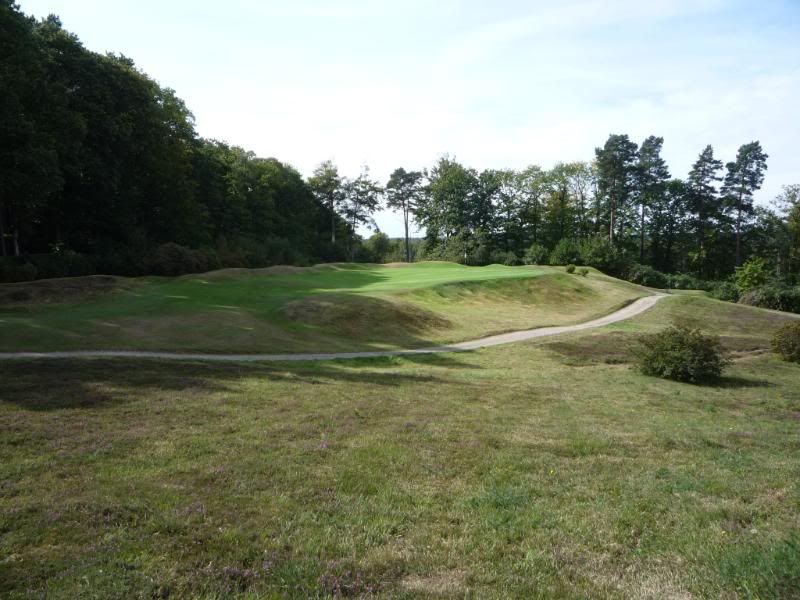
This is what you see if you miss right.

The green from behind.


With one look back from the 9th hole. This is the right side of the green and the heather beyond it.

The 9th hole is an excellent long par of 434 yards. The hole doglegs left, with the famed rhododendrons all along the left side. The bunker on the left is only 200 or so to carry, with the first of the Fernhill mounds around 265yds. The two mounds serve to effectively narrow the fairway at a desired landing area, so in order to avoid a long approach you need to really be able to shape a tee shot.
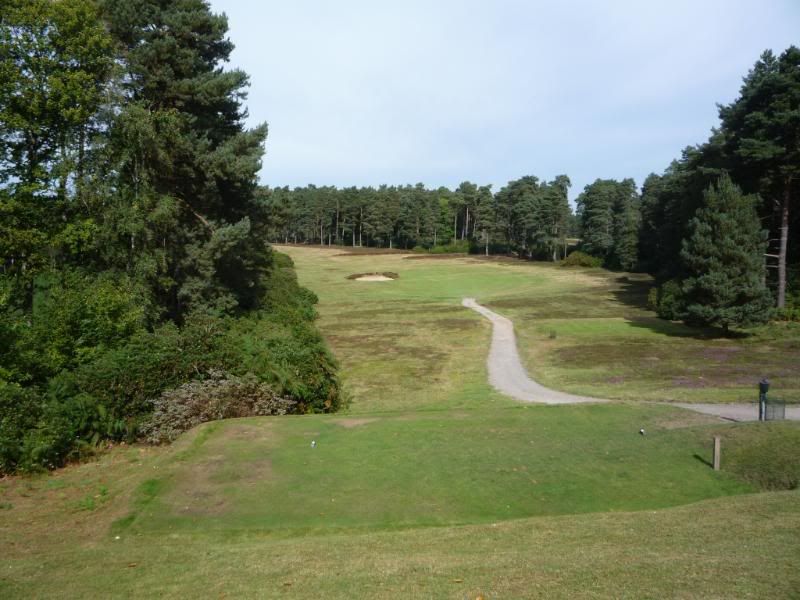
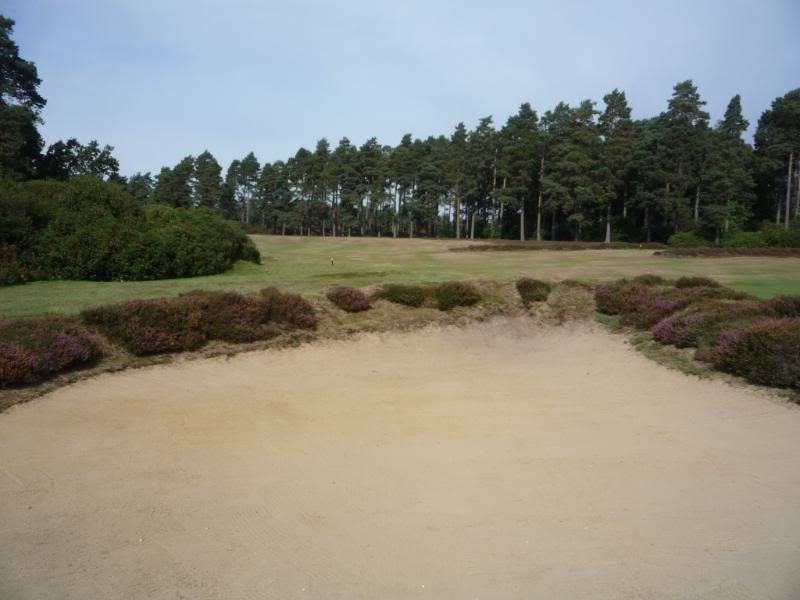
From the center of the fairway, maybe 190yds from the green. The edge of the green is just barely visible on the left side.
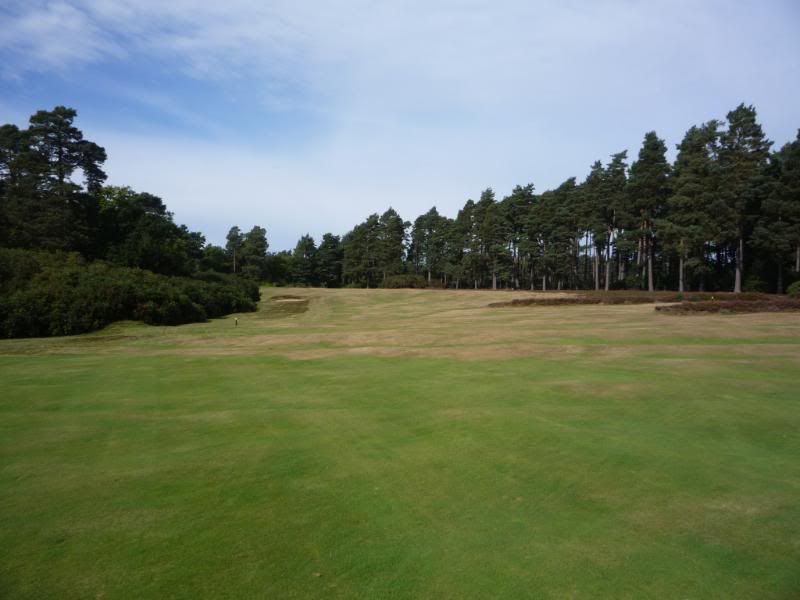
A bit further up on the right side near the mounds.
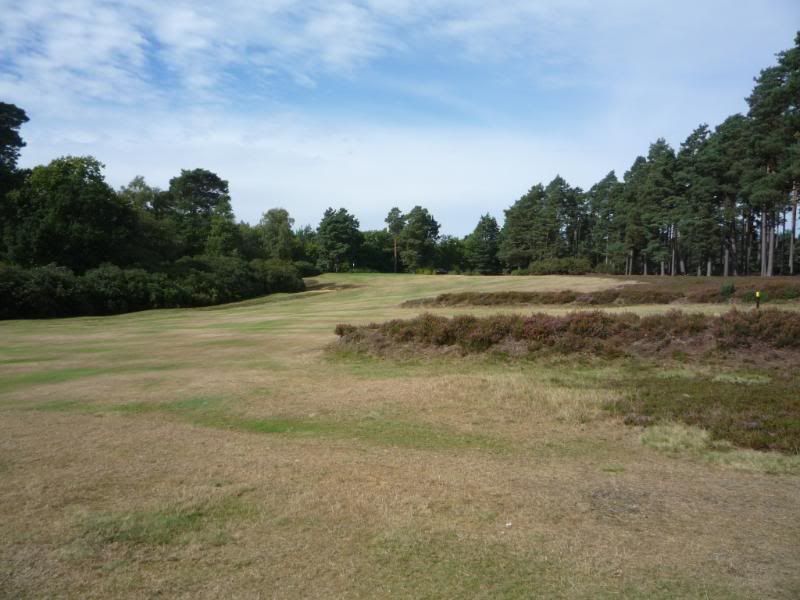
The green itself is small and bunkerless. The bunker on the left is around 70 yards from the green and helps to keep you out of the flora if you've played a poor running approach.
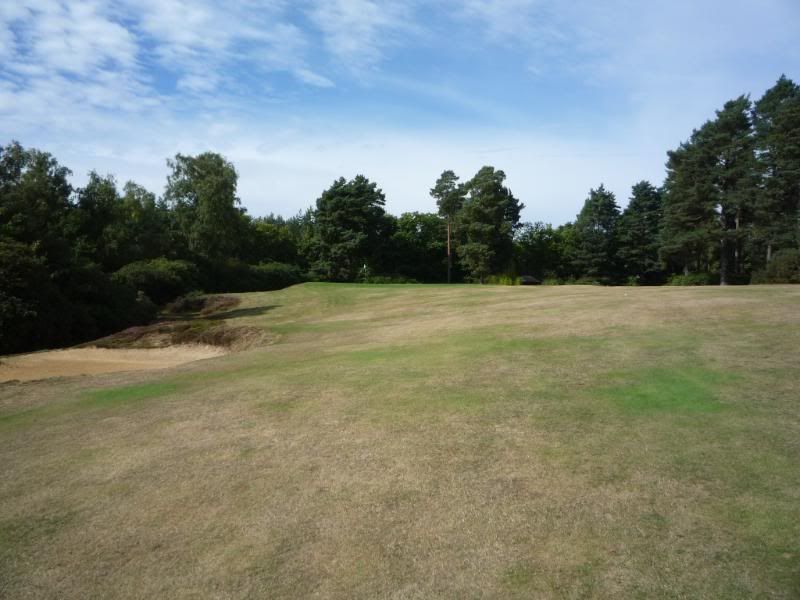
The green is perfectly receptive to a run-up approach, but falls away on three sides, making it difficult to hold.
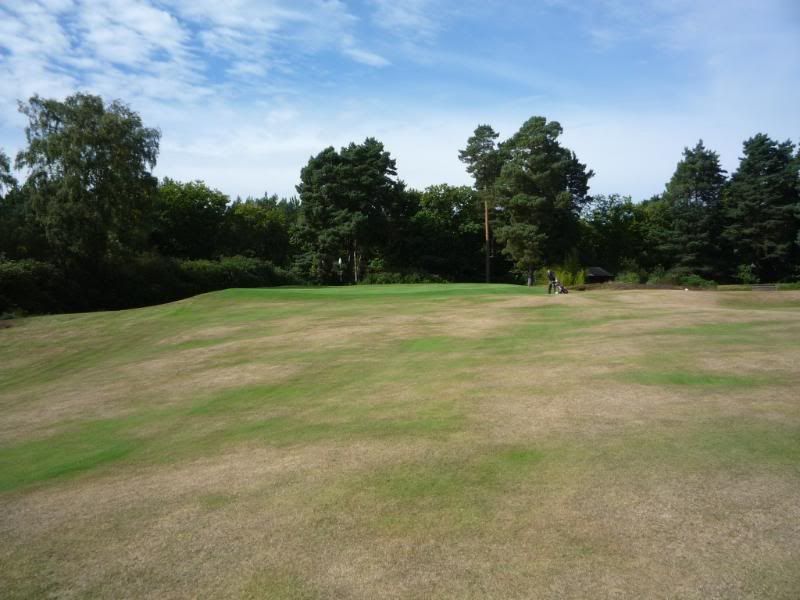
From the rear looking back towards the fairway. Not an easy hole location that day.
